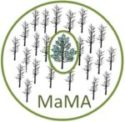All of MaMA’s citizen-science projects provide important data that help advance ash conservation, and they all use the free Anecdata citizen-science platform for reporting your data on a smartphone, tablet or computer (Anecdata is the same platform used by NASA for its citizen-science projects). As the following outlines show, the projects vary greatly in what they involve and their levels of commitment, so you should choose the one(s) right for you. Also, if you are located in the Lower Hudson, Catskills, or St. Lawrence/Eastern Lake Ontario region of New York State, you should consult the MaMA action map for your region, as it will indicate which projects are prioritized for your location.
Even if you choose not to participate in any of these projects, you can still enable ash conservation and EAB mitigation by applying MaMA’s guidance to managing your ash trees or by spreading the word about how to incorporate a long-term conservation perspective into ash management.
Project: MaMA Ash/EAB Surveys
What it involves: Looking at ash trees for signs of EAB infestation and whether any infested trees are dead. To learn more about this, see https://www.monitoringash.org/ash-eab-surveys/ and/or watch a webinar: How to recognize ash and EAB signs and participate in the MaMA Ash/EAB Surveys citizen-science project.
Where to do it: Anywhere there is at least one ash tree, which can be native or non-native, planted or naturally occurring.
When to do it: Any time of year, although distinguishing dead from live trees can only be done June-September.
Time commitment: Minimal – you can check on one or more trees and report your data in a few minutes.
Why it is important: This project helps us track the spread of EAB and see where it has reached the point that trees have already died from it, enabling the appropriate ash conservation and management actions to be prioritized for each area. This project has become especially important as agency efforts to track EAB spread have been scaled back.
Project: MaMA Monitoring Plots Network
What it involves: Designating about 40 trees to be used for mortality monitoring, tagging some or all of them, and checking their health and EAB infestation status once annually until 95% of them die from EAB. You need to commit to not cutting down any of the designated trees until they die. To learn how to do this project, see https://www.monitoringash.org/monitoring-plots/ and/or watch a webinar: How to join the MaMA Monitoring Plots Network.
When to do it: Data for this project can be collected only from June through September, but you can begin planning for it any time of year.
Where to do it: Anywhere there are at least 40 naturally occurring native ash that: 1) have not been chemically treated against EAB; and 2) are spread across from 0.5 to 10 acres. You can even establish a monitoring plot in an area where most or even all the ash have already been killed by EAB – such plots are “one and done” if in your initial data collection shows that the 95% mortality level has already been reached, meaning that you won’t need to return to them in future years. .
Time commitment: Initial plot set-up and data collection will take up to a few hours; each year afterwards, data collection will typically take at most an hour or two, with the amount of time diminishing each year as trees die off, leaving fewer to be assessed.
Why it is important: This project enables us to determine when the ash mortality due to EAB has reached the point at which any nearby healthy ash are lingering ash, allowing us to properly time the search for them. It also provides a better picture of how advanced EAB infestation is in the nearby area and how fast the ash there are dying from it, providing the basis to best manage the ash trees there. This plot network extends from the Midwest to the East, and constitutes the only such large-scale, standardized assessment of ash mortality due to EAB, and thus the data from it are extremely important.
Project: MaMA Lingering Ash Search
What it involves: Reporting lingering ash, so they can potentially be used to breed resistant native ash trees. To learn how to do this project, see https://www.monitoringash.org/lingering-ash-surveys/ and/or watch a webinar: How to find and report lingering ash and potential lingering ash.
When to do it: Data for this project can be collected only from June through September.
Where to do it: Anywhere on the MaMA Action Map that is indicated as ready to be searched for lingering ash.
Time commitment: Collecting the necessary data to document and report a lingering ash should take less than 30 minutes.
Why it is important: Our partners at the United States Forest Service have shown that some lingering ash have some degree of genetic resistance to EAB, which can be enhanced through selective breeding – this can hold the key to conserving and restoring native ash throughout North America.

